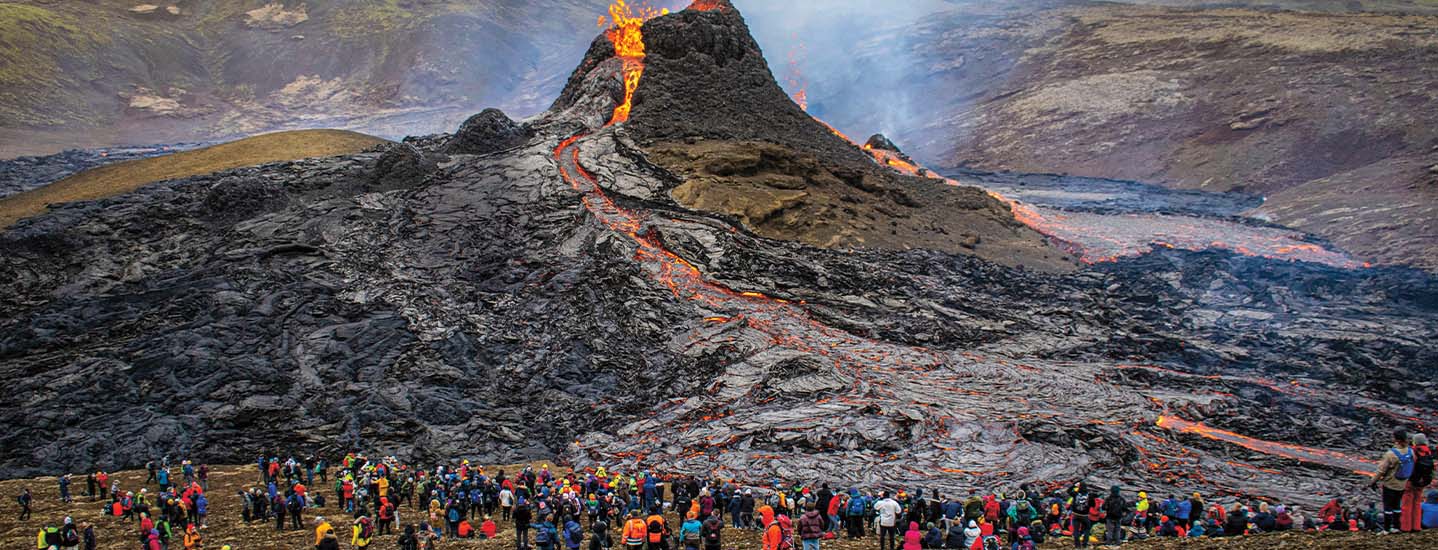When a volcano in southwest Iceland erupted for six months straight last year, more than 350,000 people went running—directly toward it. As Fagradals Mountain spewed rivers of lava, sightseers from around the world gathered to take selfies. Others roasted marshmallows and hot dogs over the flows of molten rock or simply sat on blankets to watch the red-hot spectacle unfold.
The vacationers were taking part in a new type of travel called volcano tourism. The trend has been fueled in part by social media and continues to grow with each traveler who posts a shot of an erupting natural wonder online.
Tour companies worldwide have begun cashing in on the phenomenon by offering thrill seekers more ways to explore volcanoes than ever before. Depending on the location, tourists can take helicopter rides over eruptions, hike to lava lakes, or even go volcano surfing—an extreme sport that involves sitting or standing on a thin metal board as you race down a volcano’s slopes.
But while seeing a volcano up close can be the adventure of a lifetime, scientists say it can also be dangerous—even deadly.

